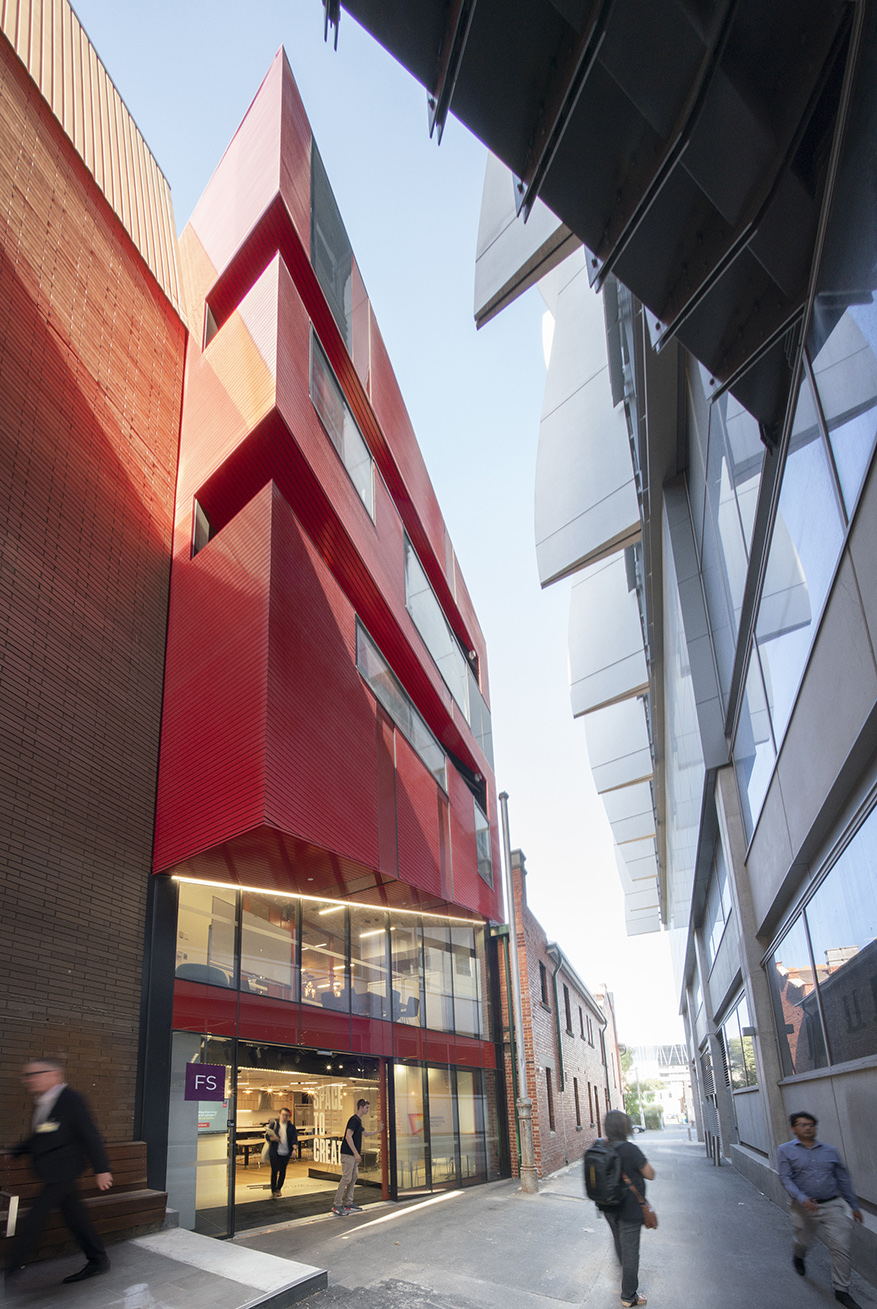
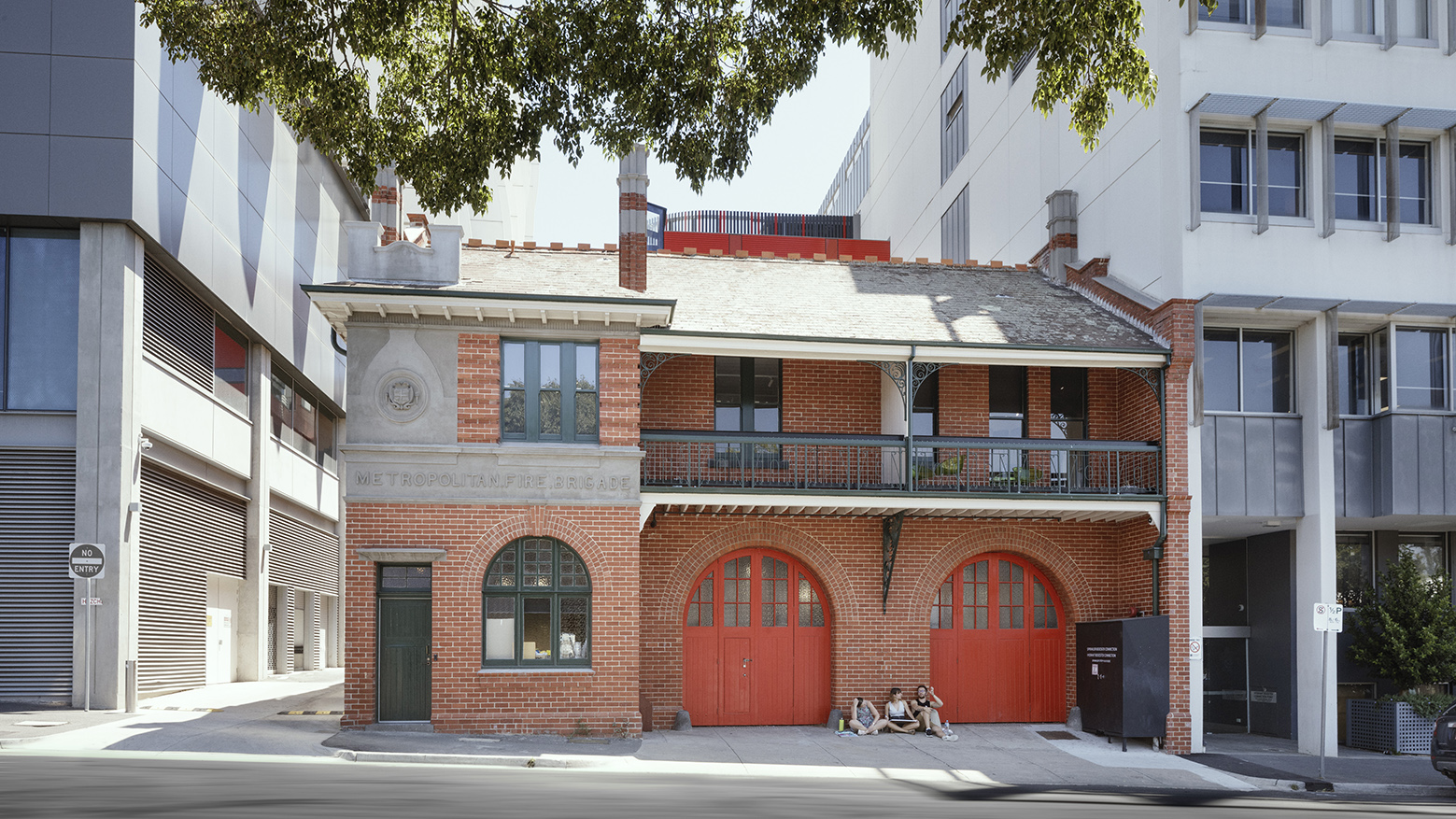
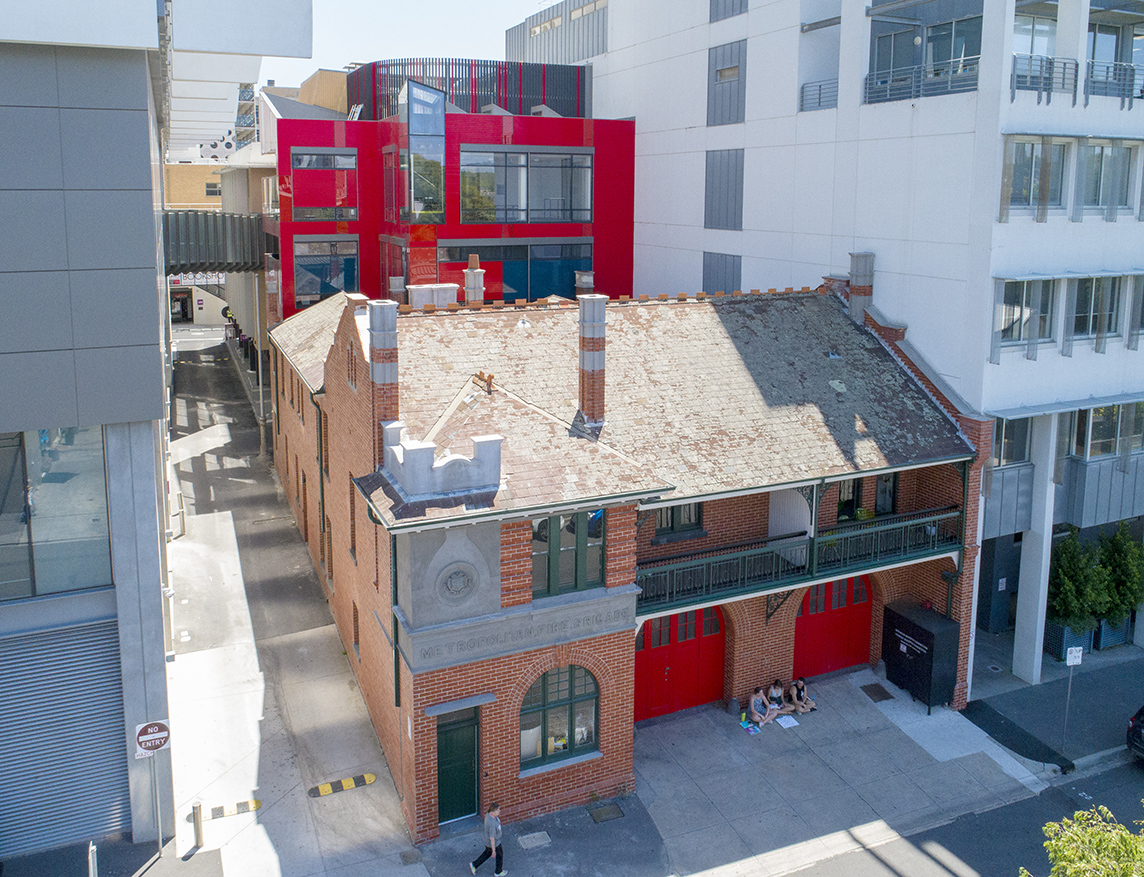
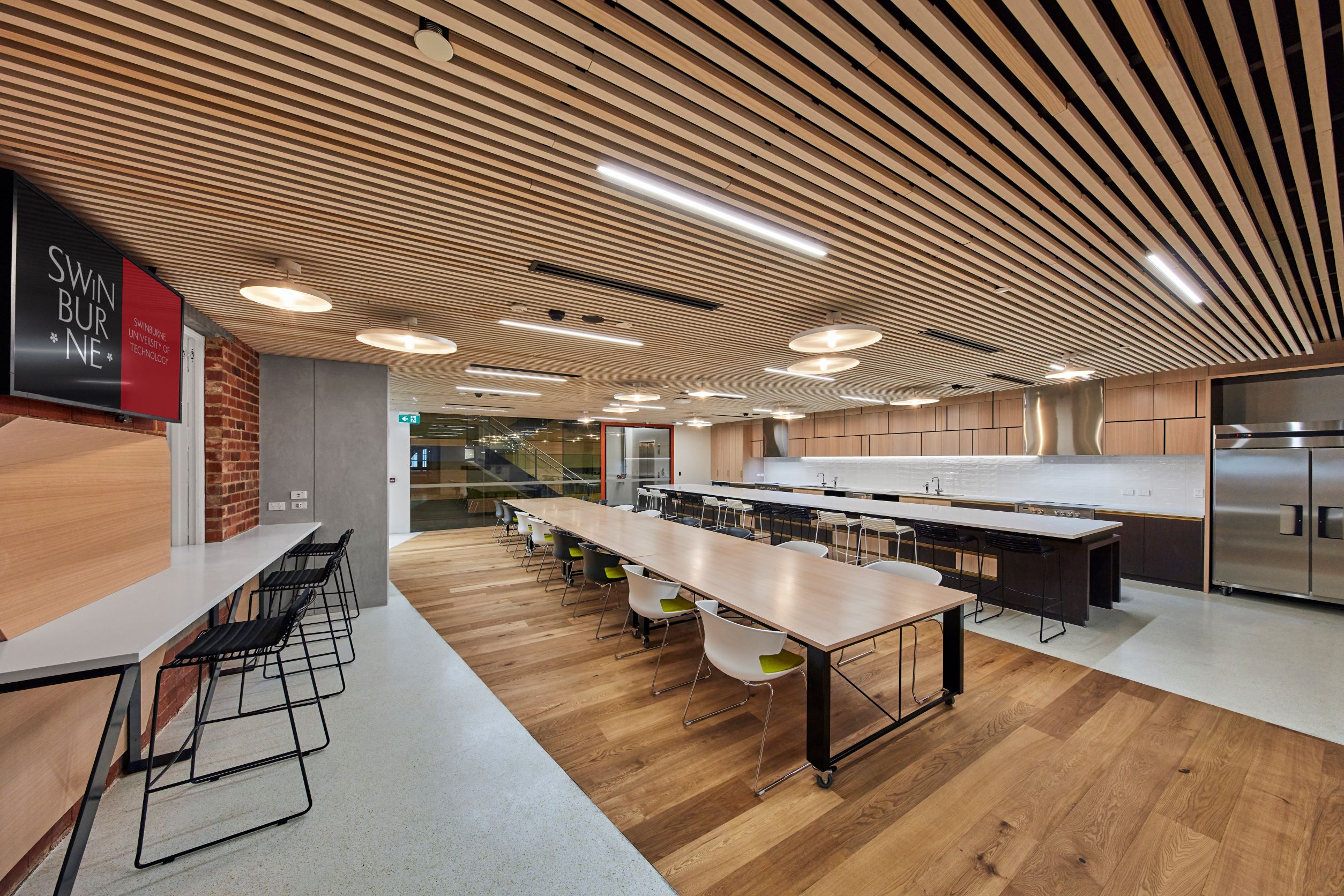
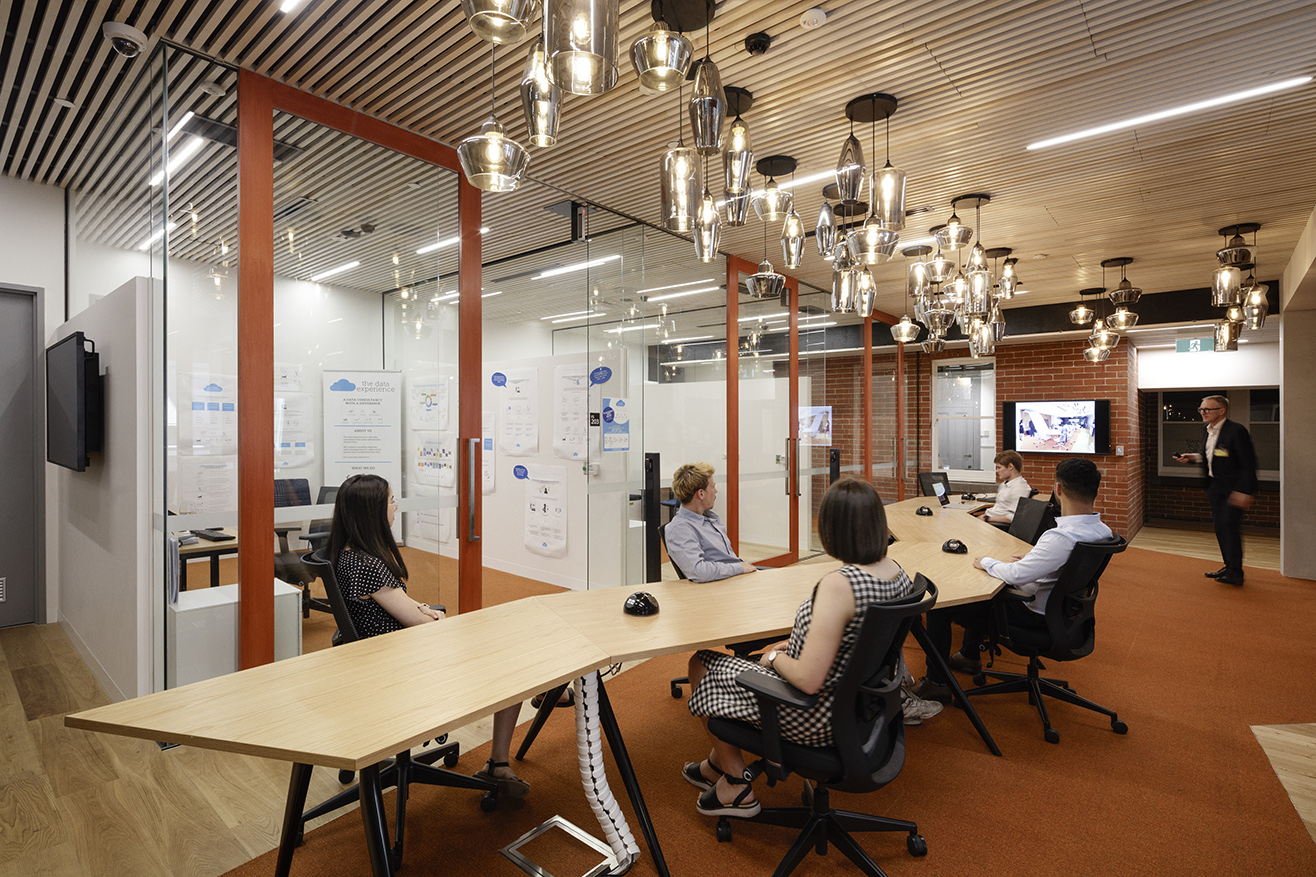
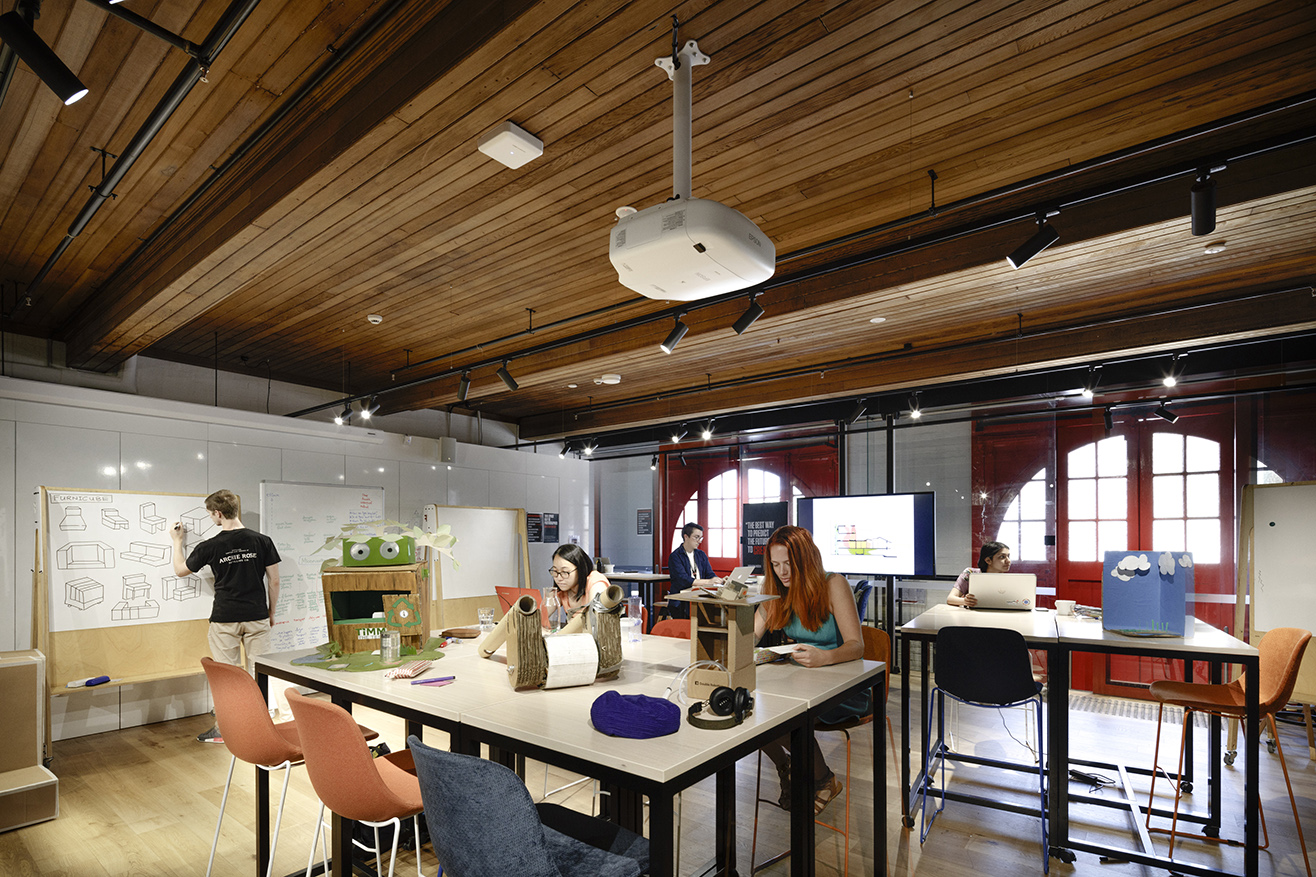
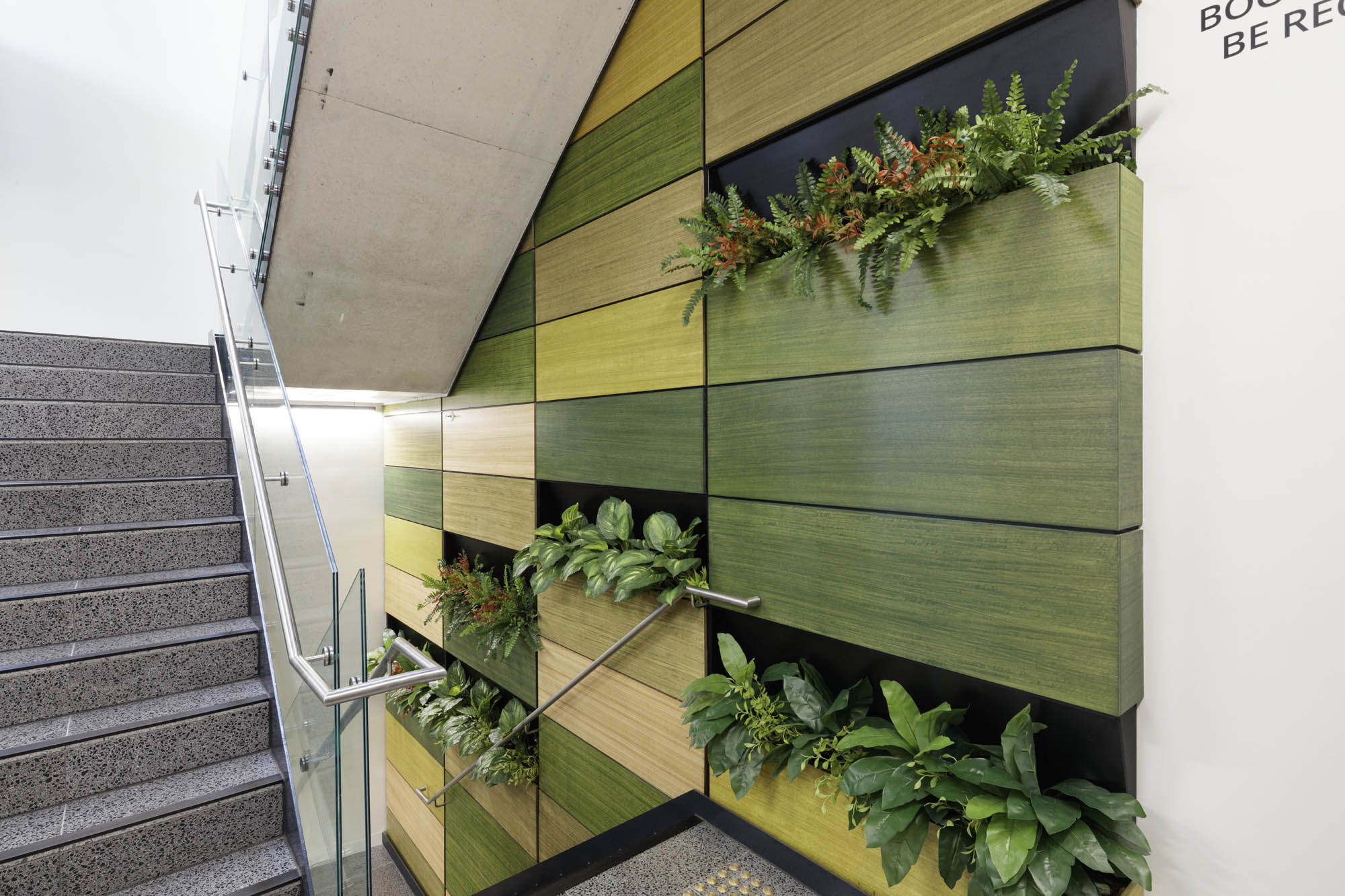
Swinburne University of Technology Innovation and Design Hub
Location Hawthorn, VIC
Project Completion 2018
Project Size 14,000m2
Project Description Idle since being decommissioned in 1997, the Innovation Hub reignites the Hawthorn Fire Station through sensitive adaptive reuse and the introduction of an innovative and dynamic pedagogical brief. The heritage listed Hawthorn Fire Station was constructed in 1910 in the Edwardian Freestyle, featuring an asymmetrical composition, a ‘blood and bandages’ red brick façade, with the original engine garage and station utilities on the lower floor and residences provided above. The redevelopment of the Fire Station respects the cultural importance of the existing building, refurbishing the core building, and establishing a new four storey infill upon the dilapidated utility yard. The new hub focuses upon interconnectedness and transparency which contrasts the secular layout of the existing building, and supports innovation programmes and inclusivity. The new building contrasts the heritage building in geometric and tectonic composition, but draws from its rich materiality. Ribbons of glazing complement the bandages of the heritage building.
The kitchen is the first and primary space. This sprouts from the faculty’s desire to dissolve institutional hierarchies through interchanges that occur during the preparation and eating of food. Connections with industry and entrepreneurs are supported through regular breakfasts and evening events. Continuous live feeds from worldwide network partners are directed into the kitchen, along with the technical spaces. The sibling space to the kitchen, the Design Studio, is accommodated within the original engine room. The Design Studio is flanked by production and meeting spaces, with break out available via the arched doors to William Street. The cedar ceiling of the engine area was returned to its original finish while details of past use are preserved.
The heritage stairways between lower floors are retained and complemented by a new vertical circulation spine on the western side. Floor-to-ceiling glazed enclosure of the stair allows the desired spatial connections, while a four storey high planted timber wall offers a visual linkage between the levels. The second floor accommodates co-working and activity spaces to support the business incubation programme of the Innovation Hub. Former apartment bedrooms and living areas are converted into offices and meeting areas. The upper floors of the building include flexible spaces with sliding and stackable walls, allowing users to readily reconfigure spaces to their diverse requirements. Interstitial balcony spaces on the upper floors allow interiors to be opened up to the outdoors, recalling the heritage veranda to William Street. Extensive writable surfaces and flexible furniture facilitate spontaneous brain storming, while user friendly “send to” AV functions allow for impromptu presentations.
